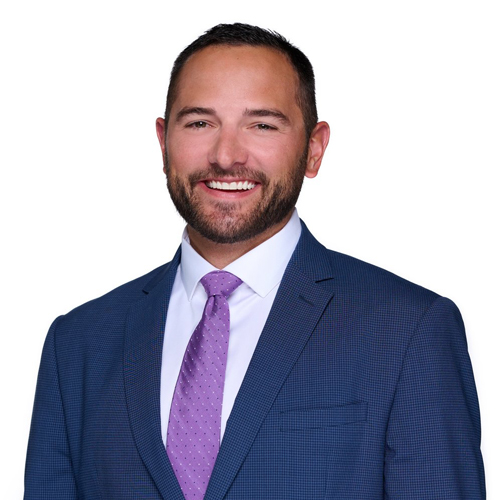We’re already a couple of years into SECURE 2.0. With all the new legislation getting passed recently, it’s easy to forget about the significant changes SECURE 2.0 brought us—some of which have either come into effect or are approaching fast. If you haven’t reviewed your firm’s retirement plan lately, there’s a good chance it needs updating to take advantage of new opportunities or comply with upcoming requirements.
Expanded Start-Up Tax Credits for Retirement Plans
One of the most compelling changes in SECURE 2.0 for small business owners is the enhancement of retirement plan start-up tax credits. If you’ve been on the fence about establishing a 401(k) or similar plan for your firm, the financial incentives are now significantly greater than before.
Previously, eligible small businesses could claim a tax credit for 50% of qualified plan start-up costs (capped at $5,000 per year for three years). SECURE 2.0 boosts this credit to 100% of qualified plan start-up costs for employers with up to 50 employees – still capped at $5,000 per year for three years¹. In other words, the IRS will essentially cover the full cost of setting up and administering a new plan for three years, up to that cap, for a firm of your size. (Firms with 51–100 employees retain the 50% credit, up to $5,000 per year¹.) This credit applies to ordinary and necessary costs to set up and run the plan, such as recordkeeping fees, third-party administrator costs, and employee education.

Credit Breakdown by Year
Importantly, to qualify for the start-up credit, the business must have at least one non-highly-compensated employee (NHCE) participating, which is often the case if you have any staff aside from the owner. The credit is available for the tax year the plan takes effect and the two following years. It’s also worth noting that you can elect to start claiming it in the tax year before the plan’s effective date if that timing works better for your tax strategy.
New Employer Contribution Credit
In addition to the start-up cost credit, SECURE 2.0 introduced a separate credit to reward employer contributions (e.g., matches or profit-sharing) in new plans. For the first five plan years, you can claim a credit based on a percentage of the employer contributions you make, up to $1,000 per employee annually². For employers with up to 50 employees, the credit is 100% of contributions (max $1,000 per employee) in the first and second year, then phases down to 75% in year 3, 50% in year 4, and 25% in year 5². (Firms with 51–100 employees get a proportionally reduced credit – 2 percentage points less for each employee over 50².) Employees earning over $100,000 are excluded from this calculation, but as a CPA firm owner, you can still receive the credit for contributions made for your staff members under the threshold.
These expanded credits can significantly offset the cost of starting and funding a retirement plan. For example, if you establish a 401(k) for your practice and incur $5,000 in setup and admin expenses, you could get the full $5,000 back as a credit each year for three years. On top of that, if you contribute, say, $1,000 each for 10 staff members in year one, the new law could give you a $10,000 credit for those contributions. SECURE 2.0 is subsidizing the upfront costs to get your plan off the ground and even some of the employer contributions – a win-win for you and your employees. If you haven’t started a plan yet, now could be the time to seriously reconsider. And if you did start a plan recently (within the last three years), be sure you’re claiming any remaining credits available.
- Start-Up Costs Credit (≤ 50 employees): 100% of eligible plan setup and admin costs (up to $5,000 per year) for 3 years.
- Start-Up Costs Credit (51–100 employees): 50% of eligible costs (up to $5,000 per year) for 3 years.
- New Employer Contribution Credit: For years 1–5 of a new plan, credit up to $1,000 per employee for employer contributions. 100% in years 1–2, then 75% (year 3), 50% (year 4), 25% (year 5). Phases out by 2% per employee for 51–100 employee companies.
Mandatory Roth Treatment for Catch-Up Contributions (High Earners)
Another SECURE 2.0 change that directly affects many firm owners and partners is the new requirement for catch-up contributions to be Roth (after-tax) for high earners. This provision was initially slated for 2024, but implementation has been delayed to 2026 to give plan sponsors time to adapt.
Therefore, starting in 2026, if you’re 50 or older and your prior year’s wages from the firm exceeded $145,000 (indexed for inflation), any catch-up contributions you make to the 401(k) must be made as Roth contributions³. In other words, no more pre-tax catch-up deferrals if you’re a high earner. Those extra $7,500 (current catch-up limit) will be post-tax dollars going forward.
Participants earning $145,000 or less in the previous year are exempt from this rule and can continue to choose pre-tax or Roth for their catch-ups as allowed by the plan³. But for many owners and senior CPAs, $145k is a relatively low bar, meaning most catch-up eligible folks in a CPA firm will be affected.

-
Choose pre-tax or Roth for catch-up contributions
-
Immediate tax deduction for traditional contributions
-
Lower current-year tax liability
-
Future withdrawals are fully taxable
-
Required minimum distributions apply
-
Tax-free growth on catch-up contributions
-
Tax-free withdrawals in retirement
-
No required minimum distributions
-
No immediate tax deduction
-
Higher current-year tax liability
From a practical standpoint, this Roth mandate for catch-ups means you’ll be paying taxes on those age-50+ extra contributions now, rather than deferring the tax. This could slightly increase your current-year tax bill if you’ve been used to making catch-up contributions pre-tax. However, the silver lining is that those catch-up amounts – and their investment growth – will be tax-free in retirement, as Roth funds. It’s a forced push toward tax diversification in your retirement savings.
Ensure that your 401(k) plan has a Roth option in place by 2026.
Many plans already do, but if, for some reason, your firm’s plan hasn’t added Roth yet, it will need to. Otherwise, you won’t be able to accept catch-up contributions for high earners. Plan administrators will likely require an amendment to implement this change. As an owner, you should also prepare for the cash flow impact: if you intend to max out catch-ups going forward, consider adjusting your tax withholding or quarterly estimates, since you won’t get the deduction for those dollars.
It may also be a good time to revisit your overall tax strategy for retirement contributions. For example, if you’re now forced to do Roth catch-ups, does it also make sense to convert some existing pre-tax balances to Roth, or to favor Roth vs. pre-tax for your standard 401(k) deferrals? These are discussions to have with your financial advisor or tax consultant, keeping in mind your expected future tax bracket, estate planning goals, and so on.
Be prepared to educate your employees (and perhaps clients) about this change. Come 2026, higher-paid staff at your firm who are 50+ will need to understand that their extra contributions are hitting their paycheck post-tax. No one likes a surprise at tax time, even CPAs! Proactively communicating this and updating your plan materials will be key.
Roth Employer Contributions Option
Continuing the Roth theme, SECURE Act 2.0 also gives employers (like your CPA firm) the option to allow Roth treatment for company contributions. Traditionally, any employer match or profit-sharing contribution had to go into the plan’s pre-tax bucket, even if an employee’s own deferrals were Roth. Now, as of 2023, you can let employees elect to have your matching or nonelective contributions treated as Roth (i.e., taxed now) if your plan adopts this feature⁴.
This is an optional provision, so you’re not required to offer it. But it’s worth understanding the implications. Once in the plan, those contributions reside in a designated Roth account and will grow tax-free. For the participant, the benefit is more Roth dollars in their retirement mix; the downside is a higher current tax bill. For the employer (you), there’s no additional employer deduction beyond the usual rules, just as there isn’t for a regular match as employer contributions are deductible either way as a business expense, subject to limits.
Two important practical notes if you consider adding this feature:
- Immediate Vesting: To qualify as Roth, the contributions must be 100% vested when made.
- Payroll and Tax Withholding: Unlike employee Roth deferrals (where taxes are withheld from the paycheck), employer contributions designated as Roth will not have income tax withheld at the time of contribution. The employee will receive a 1099-R for the amount of the Roth employer contributions to report on their tax return. This could catch people off guard – they might owe taxes on that amount come April.
So, should you offer Roth employer contributions? The answer will depend on your team’s needs and your own financial strategy. Many high-income professionals find value in accumulating Roth assets, even if it means paying some tax now. If you, as an owner, are in a position where you expect higher tax rates later (or you simply want to reduce future RMDs and leave tax-free money to heirs), being able to convert what would’ve been pre-tax employer contributions into Roth is compelling. On the other hand, if immediate tax deductions are paramount for you or your employees, you might stick with traditional contributions.
Solo 401(k) Plan Deadlines Extended for Owner-Only Businesses
If you are a sole practitioner CPA, SECURE 2.0 brought some welcome deadline relief for setting up a retirement plan. In the past, solo 401(k) plans had to be established by December 31 of the tax year to make employee deferrals for that year. (Employer contributions could be made by the tax filing deadline, but you couldn’t retroactively elect salary deferrals after year-end if the plan didn’t exist.)
Beginning with the 2023 tax year, a sole proprietor with no employees can establish a new 401(k) plan up until their tax filing deadline (not including extensions) and still treat it as if adopted in the prior year⁵. So if you finish 2025 and realize you’d like to shelter some income in a solo 401(k), you could set up the plan in, say, February 2026, before filing your 2025 return, and make both employer and employee contributions attributable to 2025. This includes Roth or traditional deferrals and catch-up contributions. The deadline for a calendar-year sole proprietor would be April 15 (the typical individual filing deadline).
Do note: This extension applies only to sole-prop or single-owner businesses. If your firm is structured as an S-corp or partnership and you have W-2 wages, you still must execute elective deferrals by 12/31 (since your compensation is set by year-end).
Expanded 401(k) Eligibility for Long-Term Part-Time Employees
SECURE Act 2.0 continues the effort (begun with the original SECURE Act in 2019) to expand retirement plan access for part-time workers. For CPA firms with part-time or seasonal staff, this is a provision to pay attention to from a plan administration and HR perspective.
Under SECURE 1.0, employers were required to allow employees who worked at least 500 hours in three consecutive years to contribute to the company’s 401(k). The first group of such “long-term, part-time” (LTPT) employees will be entering plans in 2024 (based on hours from 2021–2023). SECURE 2.0 shortens that service requirement from three years to two years, effective for the 2025 plan year⁶.
In other words, starting in 2025, any employee who logs 500+ hours in two consecutive years must be given the opportunity to contribute to your 401(k) plan. (The one-year/1000-hour rule for full-time eligibility still stands. This LTPT provision is a parallel track.)
For example, suppose you have a part-time administrative assistant who works about 10 hours a week. They hit ~520 hours in 2023 and again in 2024. Under the new rule, they’ll be eligible to enroll in the plan in 2025. Prior to SECURE 2.0, we would have had to wait until 2026 in that scenario. The law change effectively brings these folks into the plan a year sooner.
A few important points regarding long-term part-timers:
- No Employer Contribution Requirement: You are not required to give employer matching or profit-sharing contributions to LTPT employees, even when they become eligible. You can, of course, but most plans will likely treat them as a separate class that doesn’t receive matches. They are only required to be allowed to make their own salary deferrals.
- Testing Relief: You may elect to exclude long-term, part-time employees from ADP/ACP and minimum coverage testing. You may also exclude them from the top-heavy minimum contribution and vesting requirements. However, their account balances still count when determining whether the plan is top-heavy, so coordinate with your TPA or recordkeeper to document the election and apply it correctly.
- Vesting Credit: SECURE 2.0 clarified that service before 2021 can be ignored for vesting purposes for these employees. Since we’re now shortening to two years, it likely won’t matter much going forward (the clock starts with 2023 for the two-year count), but just note that the past periods might be handled differently for vesting.
For your firm, the immediate to-do is to make sure your plan documents are updated to incorporate the two-year rule by the end of 2025, and that your payroll/HR team is tracking hours for part-timers accurately. Talk with your recordkeeper; many are automatically updating plans for this provision, but you’ll want to verify. Also, be ready to notify any employees who will now become eligible under the new rule.

Action Items by Year
Conclusion: Aligning Your Plan with Strategy
SECURE Act 2.0’s provisions offer both opportunities and obligations for CPA firm owners. From generous tax credits that reduce the cost of starting a retirement plan to new Roth rules that affect how you and your team contribute, these changes are reshaping the retirement planning landscape. The key is to align your firm’s plan design proactively with your broader financial, tax, and estate strategy.
In practice, that means reviewing your plan documents and features: Are you taking full advantage of the credits available? Does your plan need amendments for the Roth catch-up mandate or part-time eligibility? Have you communicated these changes to your staff? Also, consider how these provisions interplay with your personal retirement goals. For instance, if mandatory Roth catch-ups and optional Roth matches tilt your balance toward after-tax savings, revisit your projections for future tax liabilities and Roth conversion plans.
If you haven’t done so already, now is a great time to schedule a comprehensive review of your business’s retirement plan. At WealthGen Advisors, we specialize in helping professionals navigate these changes and identify opportunities to strengthen their financial plans. Feel free to reach out to set up a retirement plan alignment review, where we’ll ensure your firm’s plan design, tax strategy, and estate plans are all working in concert under the new SECURE 2.0 rules. Just click the button below.
Sources
- IRS – Retirement plans startup costs tax credit. (Updated May 2025). Retrieved from: https://www.irs.gov/retirement-plans/retirement-plans-startup-costs-tax-credit
- Baker Tilly – How SECURE 2.0 employer tax credits benefit small businesses. (Matt Payne, Jun 24, 2024). Retrieved from: https://www.bakertilly.com/insights/how-secure-2.0-employer-tax-credits-benefit-small-businesses
- Fidelity Viewpoints – SECURE 2.0: Rethinking retirement savings. (May 20, 2025). See: “Starting in 2026…” detail on Roth catch-up requirements. Retrieved from: https://www.fidelity.com/learning-center/personal-finance/secure-act-2
- Investopedia – What Is a Good 401(k) Match? (updated Sep 2024). See: Fast Fact on SECURE 2.0 Roth employer contributions. Retrieved from: https://www.investopedia.com/articles/personal-finance/120315/what-good-401k-match.asp
- IRS – Publication 560 (2024), Retirement Plans for Small Business, “Plans established after end of tax year” (SECURE 2.0 provision for sole proprietors). Retrieved from: https://www.irs.gov/publications/p560
- Investopedia – 5 Key Changes to 401(k)s in 2025 and What They Mean for You. (Nov 16, 2023). See: “Quicker Eligibility for Part-Time Workers.” Retrieved from: https://www.investopedia.com/important-changes-401k-8743513











